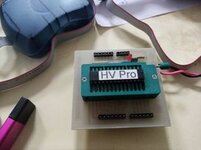johnny78
Full Member level 5

- Joined
- Jun 28, 2017
- Messages
- 270
- Helped
- 1
- Reputation
- 2
- Reaction score
- 5
- Trophy points
- 1,298
- Activity points
- 3,469
hi Guys
i need to Disable my circuit in case of Emergerncy for some reasons
But how can i decide which its restarted after Hard reset or normal power on ?
i need to do some tasks in case the emergenct button was pressed & released
any idea please ?
is it possible to save a variable to Eeprom in the case of hard reset ?
thanks
Johnny
i need to Disable my circuit in case of Emergerncy for some reasons
But how can i decide which its restarted after Hard reset or normal power on ?
i need to do some tasks in case the emergenct button was pressed & released
any idea please ?
is it possible to save a variable to Eeprom in the case of hard reset ?
thanks
Johnny




